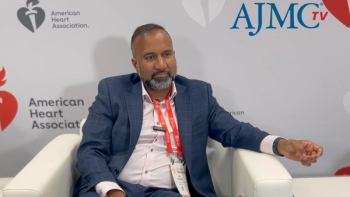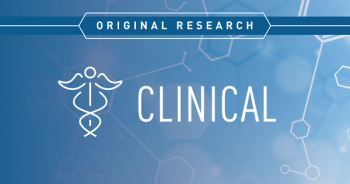
Racial Disparities in Opioid Use Disorder Treatment After ED Visit for Overdose
Key Takeaways
- Black patients are less likely to receive outpatient OUD treatment referrals post-ED visit for opioid overdose compared to White patients.
- Hospital admissions increase the likelihood of receiving outpatient treatment referrals and buprenorphine prescriptions.
There are significant racial disparities in outpatient referrals for opioid use disorder treatment, highlighting urgent need for targeted interventions in emergency care, according to a recent study.
Black patients were significantly less likely to receive outpatient referrals for opioid use disorder (OUD) treatment following an emergency department (ED) visit for opioid overdose, a study published in
“Patients seen in the ED for opioid overdose are a particularly vulnerable group,” the authors wrote. “The 1-year mortality rate after an ED visit for opioid overdose is approximately 5%, with a dramatic number of deaths observed in the first days after the encounter. Therefore, these visits represent a crucial opportunity to start evidence-based treatment with buprenorphine or other MOUD and to provide naloxone to treat future overdose. Each of these interventions have the capacity to dramatically decrease mortality following a nonfatal overdose.”
Past studies have used insurance databases and claims data to assess rates of MOUD in the days following overdose, which underrepresents patients who are uninsured or publicly insured, the authors explained. Nearly three-fourths of individuals who require OUD treatment in the US fall into these categories.2 The authors of the current study aimed to fill this gap by using data from the Toxicology Investigators Consortium (TOXIC) Fentalog Study, which is an ongoing study across 10 geographically diverse health care centers in the US.1 The aim was to assess potential disparities in outpatient treatment linkage, OUD treatment prescribing, and naloxone provision or prescribing after hospital visits for opioid overdose
“While the majority of prior observational research in this area has been aimed toward ED-initiated buprenorphine, many patients seen in the ED for opioid overdose are admitted, and there is a need to better understand potential disparities in care between patients discharged from the ED after overdose and those admitted to the hospital for ongoing care,” the authors wrote.
The main outcome in the study was the proportion of patients receiving outpatient treatment referral at hospital discharge, with outpatient treatment referral being a scheduled outpatient appointment verified by medical records. Receipt of a take-home naloxone kit or naloxone prescription at discharge or receipt of a buprenorphine prescription at discharge based on medical records were secondary outcomes.
A total of 1683 patients were included in the study, with a mean (SD) age of 42.5 (14.5) years. Most patients (72.6%) were male, 447 (26.6%) were Black, 63 (4.3%) were Hispanic, and 867 (51.5%) were White.
In the overall population, 299 (17.8%) patients were referred to outpatient treatment. Black patients had a significantly decreased adjusted odds ratio (aOR) for receiving outpatient treatment referrals (aOR, 0.67; 95% CI, 0.47-0.97) compared with White patients. Several other factors were also significantly associated with increased referral to outpatient follow-up in the unadjusted analysis, including psychiatric diagnoses (12.3% of patients with a diagnosis were referred vs 6.7% with no psychiatric diagnosis [P = .02]) and hospital admissions (11.2% with admission vs 7.8% without hospital admission were referred [P < .001]).
A total of 713 (42.4%) received a naloxone kit or prescription, and 141 (8.4%) received a buprenorphine prescription. Younger patients were significantly more likely to receive a naloxone kit or prescription at discharge based on unadjusted analysis, and patients with prior psychiatric history were more likely than those without psychiatric history to receive a naloxone kit or prescription. Patients who were not admitted to the hospital were more likely to receive a naloxone kit or prescription vs those who were admitted. Race was also significantly associated with naloxone receipt at discharge, with 168 (16.3%) Black patients not receiving naloxone vs 221 (10.5%) receiving naloxone (P < .001).
of outpatient treatment referral (aOR, 0.67; 95% CI, 0.47-0.97). Hospital admission was also associated with increased adjusted odds of outpatient treatment referral (aOR, 3.13; 95% CI, 2.34-4.20). Geographic variation was associated with all primary and secondary outcomes.
“In this large multicenter national cohort of patients with suspected opioid overdose, Black patients were less likely to receive outpatient referrals for OUD,” the authors concluded, also noting that the overall rates of treatment referral, receipt of naloxone kits or prescriptions, and buprenorphine prescription at discharge were low. “Admitted patients were also more likely to receive outpatient referrals and buprenorphine than those discharged from the ED. These findings underscore the need for targeted interventions to address racial disparities in ED care for OUD, particularly in enhancing referral processes and buprenorphine prescribing practices for Black patients.”
References
1. Shastry S, Carpenter J, Krotulski A, et al. Disparities in treatment and referral after an opioid overdose among emergency department patients. JAMA Netw Open. 2025;8(7):e2518569. doi:10.1001/jamanetworkopen.2025.18569
2. Mauro PM, Gutkind S, Annunziato EM, Samples H. Use of medication for opioid use disorder among US adolescents and adults with need for opioid treatment, 2019. JAMA Netw Open. 2022;5(3):e223821. doi:10.1001/ jamanetworkopen.2022.3821
Newsletter
Stay ahead of policy, cost, and value—subscribe to AJMC for expert insights at the intersection of clinical care and health economics.






























































